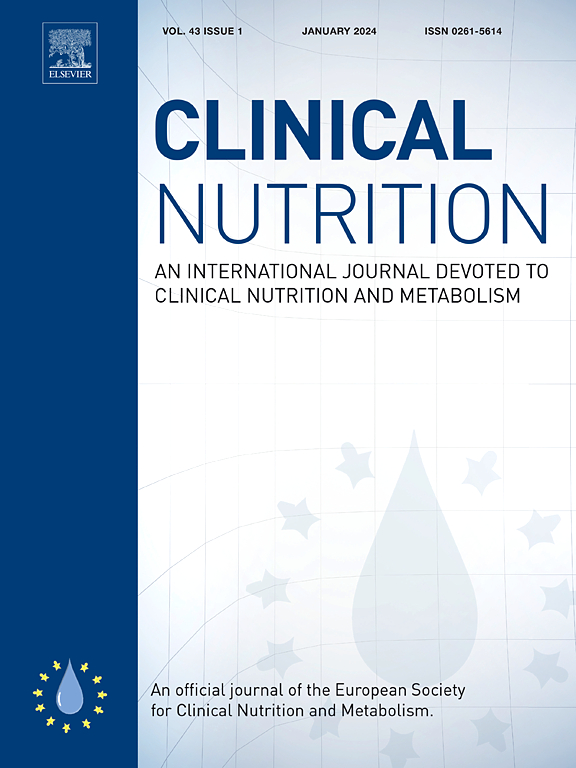A new concept to establish protein requirements
IF 6.6
2区 医学
Q1 NUTRITION & DIETETICS
引用次数: 0
Abstract
There is an increased need to establish the protein requirements for body weight maintenance and optimal health in humans. Different methods were developed in the past to assess protein requirements in which known amounts of protein/amino acids were provided. The purpose of this paper is to propose a new concept of establishing protein requirements in healthy and diseased conditions using a novel stable isotope approach.
In the past years, we consistently found that when using a novel stable isotope pulse approach the intracellular production of amino acids (i.e., phenylalanine and tyrosine) is more than double the plasma rate of appearance, as measured by the commonly used primed constant infusion approach, leading to a net protein breakdown that is more than twice than estimated in the past. Net protein breakdown in the fasted state may provide a good estimation of the actual net protein loss that would take place during the day and thus can be used to estimate daily protein requirements. Our recent study found that a net protein breakdown ∼1 g protein/kg body weight/day was equal to the habitual protein intake, suggesting that there is a relation between habitual protein intake and protein requirements. As net protein breakdown is lower with advanced aging and in patient populations with comorbidities, a lower protein requirement for body weight maintenance is suggested.
We propose a new concept to establish actual protein requirements of healthy and disease conditions, using a pulse tracer administration and to consider individual habitual protein intake and health conditions.
建立蛋白质需要量的新概念
人类越来越需要确定维持体重和最佳健康所需的蛋白质。过去发展了不同的方法来评估已知数量的蛋白质/氨基酸的蛋白质需求。本文的目的是提出一种利用新的稳定同位素方法建立健康和疾病条件下蛋白质需求的新概念。在过去的几年里,我们一直发现,当使用一种新的稳定同位素脉冲方法时,细胞内氨基酸(即苯丙氨酸和酪氨酸)的产生是常用的引物恒定输注方法测量的血浆出现率的两倍多,导致净蛋白质分解比过去估计的两倍多。空腹状态下的净蛋白质分解可以很好地估计白天实际发生的净蛋白质损失,因此可以用来估计每日蛋白质需要量。我们最近的研究发现,净蛋白质分解~ 1克蛋白质/公斤体重/天等于习惯性蛋白质摄入量,这表明习惯性蛋白质摄入量与蛋白质需求量之间存在关系。随着年龄的增长和有合并症的患者群体,净蛋白质分解较低,因此建议降低维持体重所需的蛋白质。我们提出了一种新的概念来建立健康和疾病条件下的实际蛋白质需求,使用脉冲示踪剂管理,并考虑个人习惯性蛋白质摄入量和健康状况。
本文章由计算机程序翻译,如有差异,请以英文原文为准。
求助全文
约1分钟内获得全文
求助全文
来源期刊

Clinical nutrition
医学-营养学
CiteScore
14.10
自引率
6.30%
发文量
356
审稿时长
28 days
期刊介绍:
Clinical Nutrition, the official journal of ESPEN, The European Society for Clinical Nutrition and Metabolism, is an international journal providing essential scientific information on nutritional and metabolic care and the relationship between nutrition and disease both in the setting of basic science and clinical practice. Published bi-monthly, each issue combines original articles and reviews providing an invaluable reference for any specialist concerned with these fields.
 求助内容:
求助内容: 应助结果提醒方式:
应助结果提醒方式:


